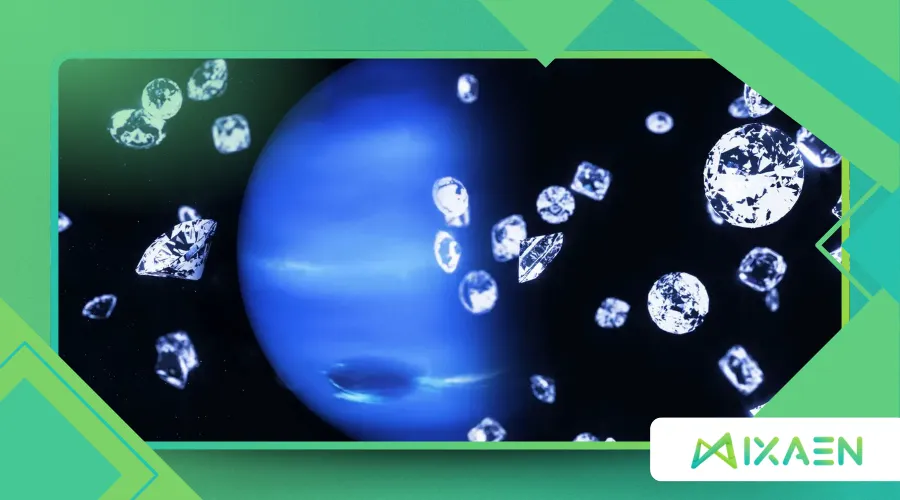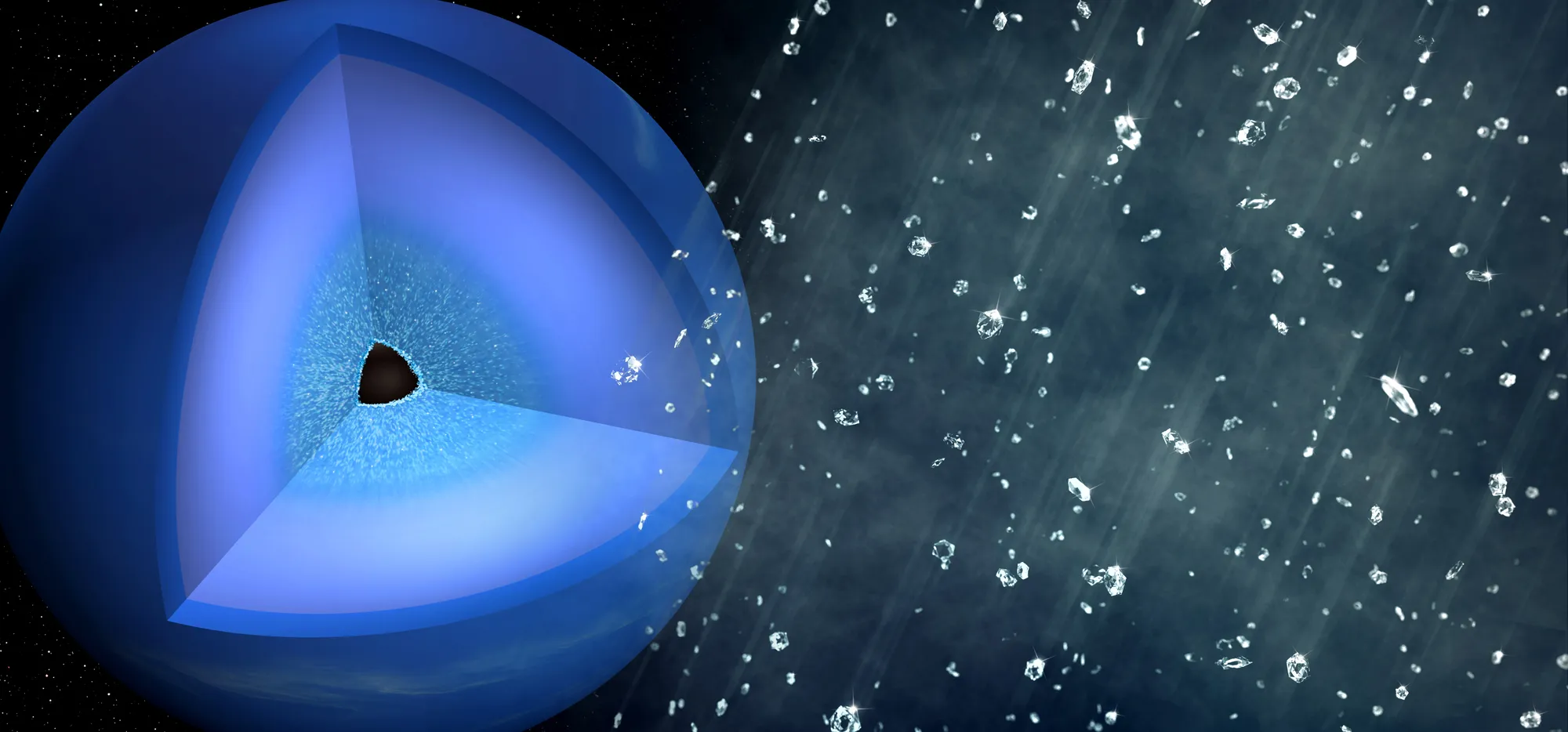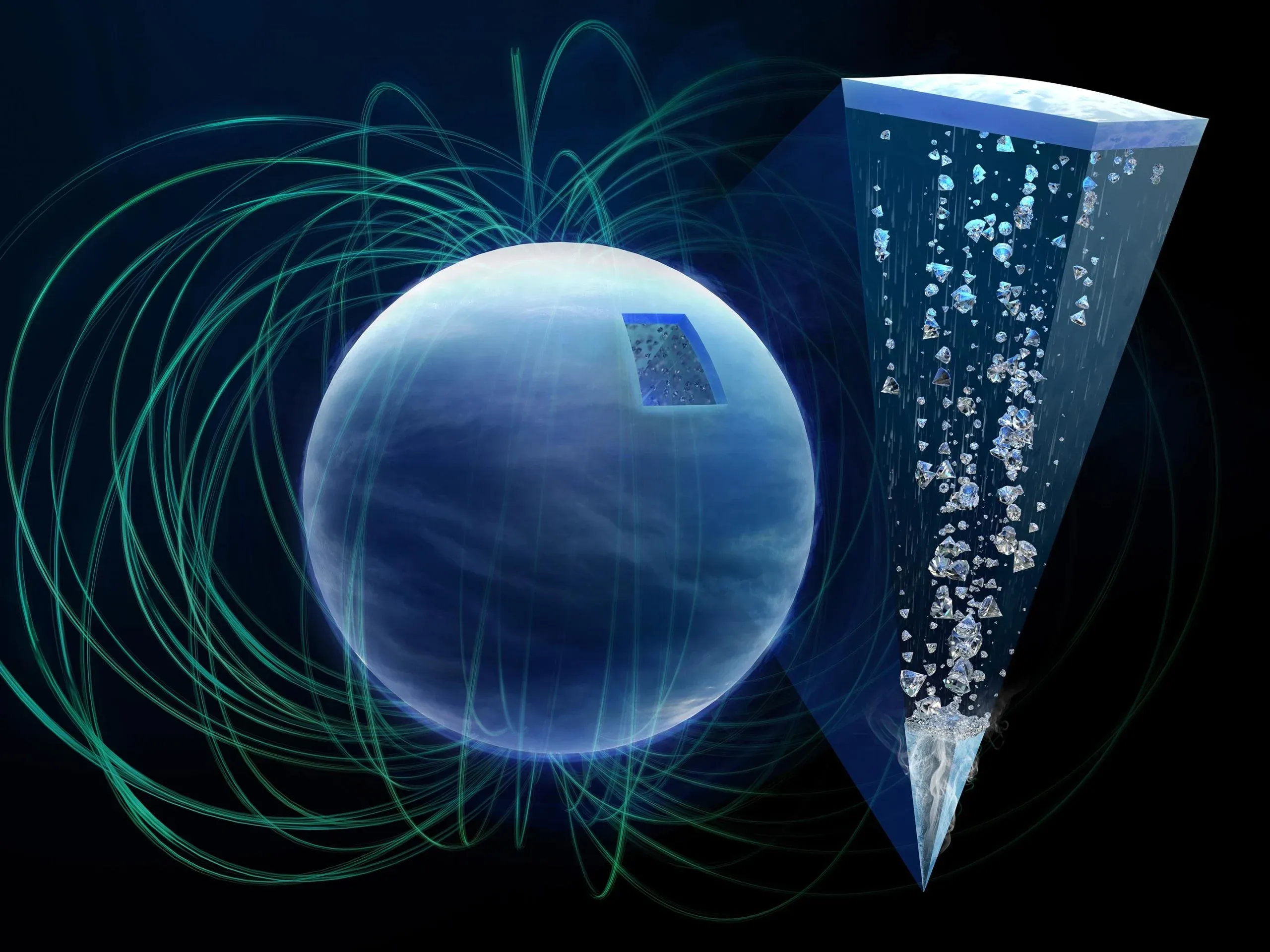Discover the Exoplanets Where It Rains Diamonds and Their Fascinating Facts

Among the countless exoplanets where it rains diamonds, scientists have uncovered celestial bodies with atmospheric conditions so extreme they turn carbon into glittering gemstones.
Anúncios
These distant worlds, far beyond our solar system, challenge our understanding of planetary science while igniting curiosity about the universe’s hidden wonders.
The idea of diamond rain captures the imagination, suggesting that the cosmos can produce phenomena that are both beautiful and scientifically intriguing.
As researchers delve deeper into the atmospheres of these exoplanets, they unveil secrets that could change our perception of what makes a planet habitable or valuable.
Let’s explore the science, the candidates, and the implications of these diamond-rich worlds.
The Science Behind Diamond Rain
Extreme Conditions Create Extraterrestrial Gems
Diamond rain isn’t science fiction—it’s a product of extreme physics.
On certain exoplanets where it rains diamonds, immense pressure and heat break down methane in the atmosphere, releasing carbon atoms.
These atoms then compress into diamond crystals as they descend into denser atmospheric layers.
Understanding the processes that lead to diamond formation not only fascinates scientists but also opens up new avenues of research in planetary geology.
The extreme conditions found on these planets push the boundaries of our current scientific knowledge, prompting questions about the fundamental nature of matter under such pressures.
A 2020 study published in Nature Astronomy suggested that ice giants like Neptune and Uranus might harbor diamond rain internally.
Extrapolating this to larger, more volatile exoplanets, researchers theorize that some gas giants could have entire diamond hailstorms.
The Role of Carbon-Rich Atmospheres
Not all planets can produce diamond precipitation.
The key lies in carbon abundance.
Planets with high methane (CH₄) concentrations—often found orbiting carbon-rich stars—are prime candidates.
When lightning storms or intense heat split methane molecules, free carbon atoms bond under pressure, forming microscopic diamonds that fall like celestial glitter.
This process highlights the intricate relationship between a planet’s atmospheric composition and its geological characteristics.
As scientists continue to study these atmospheres, they gain insights into the potential for life and the diversity of planetary systems in the universe.
The discovery of carbon-rich exoplanets also raises intriguing questions about the origins of life and the conditions necessary for it to thrive.

Top Exoplanets Where It Rains Diamonds
1. WASP-121b: The Ultra-Hot Jupiter with a Twist
WASP-121b, a searing gas giant 850 light-years away, defies expectations.
While its dayside vaporizes metals, its cooler nightside might allow carbon to crystallize into diamonds.
Though not confirmed, its atmospheric dynamics make it a strong contender among exoplanets where it rains diamonds.
The extreme temperature variations on WASP-121b create a unique environment that challenges our understanding of planetary atmospheres.
Research into this exoplanet could reveal more about the processes that govern weather patterns on gas giants, potentially applicable to our own solar system.
Key Features of WASP-121b
| Feature | Detail |
|---|---|
| Temperature | Up to 4,600°F (2,500°C) |
| Atmospheric Makeup | Hydrogen, helium, carbon compounds |
| Diamond Rain Potential | High (theoretical) |
2. HD 189733b: The Cobalt Blue Hellscape
Famous for its striking blue hue, HD 189733b’s silicate-rich winds could theoretically facilitate diamond formation.
The planet’s violent storms and extreme pressure create an environment where carbon might condense into precious stones.
This exoplanet serves as a reminder of the incredible diversity of planetary environments that exist beyond our own.
HD 189733b’s unique atmospheric conditions also provide a natural laboratory for studying the effects of extreme weather on planetary geology.
As telescopes and observational techniques improve, scientists hope to gather more data about this fascinating world and its potential for diamond rain.
++ Can Gaseous Exoplanets Host Life? Exploring the Possibilities Beyond Our Solar System
3. 55 Cancri e: The “Super-Earth” Covered in Diamonds?
Once speculated to be a carbon planet with a diamond crust, 55 Cancri e remains a subject of debate.
While its surface may not literally rain diamonds, its carbon-heavy composition suggests that deeper layers could harbor crystallized carbon formations.
The ongoing research into 55 Cancri e illustrates the complexities involved in studying exoplanets and their potential resources.
As scientists gather more data, they refine their models and theories regarding the planet’s structure and atmospheric conditions.
This exoplanet serves as a case study in the search for valuable resources in the cosmos, potentially paving the way for future exploration.

Why Diamond Rain Matters Beyond the Spectacle
A Window Into Planetary Formation
Studying exoplanets where it rains diamonds helps scientists understand the diversity of planetary systems.
These extreme environments reveal how carbon cycles operate under conditions impossible to replicate on Earth.
By analyzing these processes, researchers can gain insights into the formation and evolution of planets throughout the universe.
Understanding how different elements interact under various conditions is crucial for developing comprehensive models of planetary formation.
Moreover, these findings may have implications for the search for life, as they can help identify planets with the right conditions for habitability.
The Future of Resource Mining (A Sci-Fi Dream?)
While mining diamonds from distant worlds remains a fantasy, the discovery of such exoplanets fuels discussions about extraterrestrial resources.
Could future civilizations harvest diamonds from alien atmospheres?
For now, it’s a tantalizing “what if.”
This speculative idea encourages scientists and entrepreneurs alike to consider the possibilities of space exploration and resource utilization.
As technology advances, the dream of harvesting resources from other planets may become more feasible, leading to new economic models based on interstellar mining.
The discussion surrounding this topic also highlights the ethical considerations of exploiting extraterrestrial resources.
For further information on exoplanets and their unique characteristics, visit NASA Exoplanet Exploration.
Conclusion: The Universe’s Hidden Treasures
The concept of diamond rain stretches our imagination, proving that the universe holds wonders beyond our wildest dreams.
As we uncover more exoplanets where it rains diamonds, we not only expand our cosmic knowledge but also redefine what’s possible in the vast expanse of space.
From WASP-121b’s scorching skies to HD 189733b’s tempestuous winds, these worlds remind us that the universe is far stranger—and more dazzling—than we ever imagined.
As scientists continue to explore these fascinating exoplanets, they may uncover even more astonishing phenomena that challenge our understanding of the cosmos.
The ongoing quest to learn about these distant worlds fuels our curiosity and underscores the importance of space exploration.
References & Further Reading
- Nature Astronomy (2020): “Diamond precipitation in planetary atmospheres”
- NASA Exoplanet Archive: Updated catalog of diamond-rain candidates
Would you visit a planet where it rains diamonds—if survival were possible? Share your thoughts in the comments!
